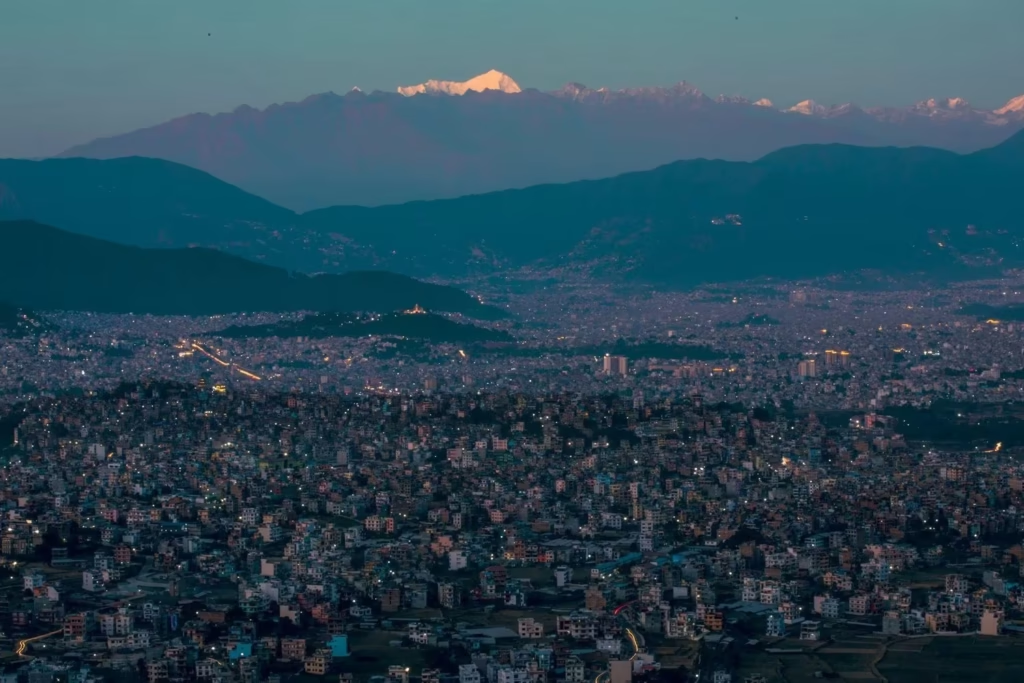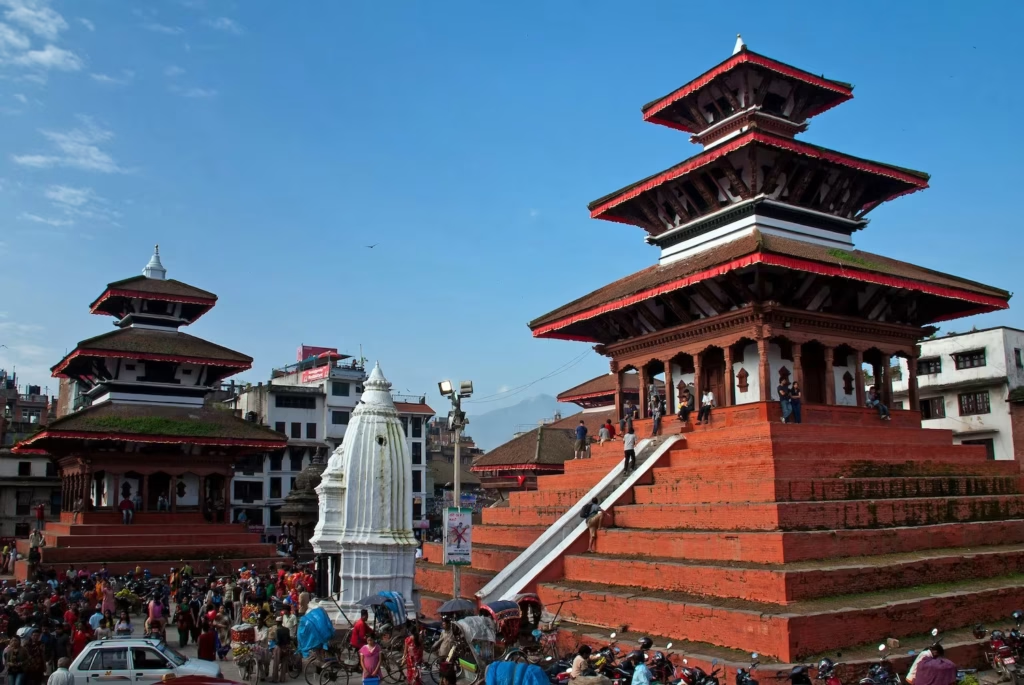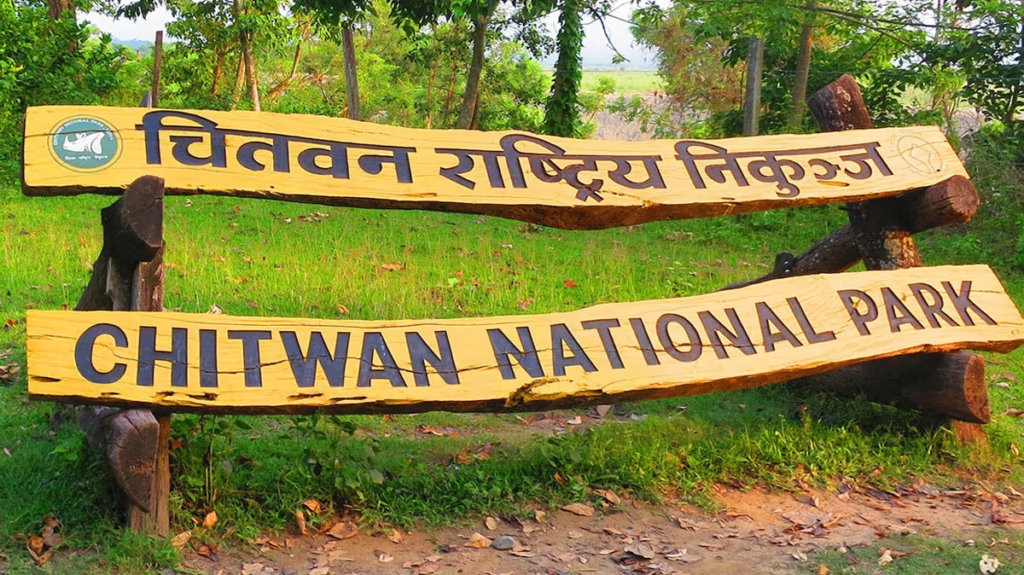Have you ever imagined what it feels like to be in the core of cultural gems surrounded by snow-capped mountains? Well, a perfect Nepal trip sums it all up.
Planning a trip to Nepal is not just visiting a beautiful destination but also immersing in the culture and local lifestyle.
Nepal is home to the Himalayas, multicultural communities, ancient temples, and some of the wonders of the world. Whether you are looking for a family tour, vacation, hike, or adventurous expeditions, this country has all it for everyone.
Our well curated Nepal trip package sums up your vacation in this beautiful country, making your adventure more seamless. We have tried to make it more insightful with the information about some of the best places to visit in Nepal like Kathmandu, Pokhara, and Chitwan.
Along with that, cultural immersion and other extra activities come with greater joy. With this guide, you will be able to manage your Nepal trip cost, safety, and adventures with smart budget tips and guides.
Planning Your Budget for a Nepal Trip
Nepal boasts multiple travel plans and packages for all budgets. From family vacations to extensive expeditions, the country has options for all adventures with diverse budget levels.
On average, traveling to Nepal can cost anywhere from $40 to $50 per day. It covers meals, transportation, and lodging during the stay. If you are planning a budget trip, you can manage it within $20 to $30 per day as well.

The average cost for mid-range travelers will have options of around $50 to $70 per day. Similarly, luxurious travel or adventures can cost more than that. It might include a multi-day hike or stay that comes with higher expenses.
An average multi-day hike in Nepal costs over $500 and the budget can fluctuate depending upon itinerary and activities. For example, a two-week trip in Nepal can cost you $500 on average for low to mid-range travel packages.
In the meantime, luxury travel packages can cost more than $1000 and can exceed more than that. Just for the information, expedition permits solely cost more than $1,000. And if we are talking about the Mount Everest Expedition, the permit cost is more than $11,000 per person, excluding other services.
Besides, key expenses in Nepal include international and domestic flights, accommodation [both tea houses and hotels], local transport, and travel permits. Understanding these cost labels helps you in planning a realistic Nepal trip budget.
How to Travel Nepal on a Budget
During your Nepal trip, you can opt for several methods that help you save your expenses. We recommend you spend your budget on such things that are requisites of the plan.
Here are some of the ways you can do so:
- Choose local guest houses and tea houses for stay instead of hotels. This option will help you save comparatively more money since hotels can cost you more than $50 per night in Nepal. Tea house or Guest House stay only costs you around NPR 400 to NPR 1000 per night.
- Use local buses for transportation. The private rented cabs in Nepal will charge you more money than the local transportation. In reality, the cost of traveling in private cabs is over 200% times more than traveling in public buses.
- Dine at local restaurants and cafes. They offer authentic Nepali cuisine and dishes without compromising taste at a reasonable price. Normally, a typical Nepali dish like Dal Bhaat and Tarkari costs you around $2 to $3 per plate, while dining at fine restaurants or hotels can cost you more than 200% to 300%.
Top Money-Saving Tips During Nepal Trip
- Travel during the start or end of the peak seasons, especially during March and September. During this time, there will not be much traffic in your preferred destination and the cost of permits, accommodation, and logistics will also be quite cheaper.
- Always rent or buy trekking gear locally in Nepal rather than bringing it on your own. You can find several travel gear stores in Kathmandu and Pokhara, where you can find your required items at low costs.
- Group treks are much cheaper than the independent ones. So, if you are looking for a cutting budget, joining group treks will help as it splits costs among multiple trekkers.
Best Places to Visit in Nepal Trip
The multicultural land of Nepal stands out, with some of the world-class destinations bringing both natural and cultural significance. The country homes gems such as majestic mountains and ancient cities, best for family vacations and cultural immersion.
We have compiled some of the best places to visit in Nepal during your trip and make your journey unforgettable with ever-lasting memories. Let’s go through it.
Kathmandu Valley

Kathmandu Valley is the capital city of Nepal. It is also nicknamed the ‘City of Temples,’ and there’s a reason behind it. It is an ancient city, culturally molded with Hindu and Buddhist religions.
Travelers in Kathmandu valley can encounter temples and shrines in each 100 meters distance. And it is one of the key attractions of this beautiful city, providing religious beliefs and cultural significance.
Kathmandu Valley is also home to multiple UNESCO World Heritage Sites. They are Kathmandu Durbar Square, Bhaktapur Durbar Square, Patan Durbar Square, Pashupatinath, Boudhanath, and Swayambhunath Temple.
The three Durbar Squares were once Royal Palaces of the late Malla Kings, who ruled the valley before the unification campaign launched by King Prithvi Narayan Shah.

Similarly, the three ‘Naths’ of the valley bring millions of people together with its highly decorated cultural value. Pashupatinath is considered the biggest shrine of Lord Shiva in the world.
Likewise, the Boudhanath and Swayambhunath Temples are Buddhist shrines which are regarded as holy landmarks by both Hindu and Buddhist devotees.
These temples give insights into the intricate ancient architecture, spiritual values, and also about Hindu and Buddhist religion.
Kathmandu Valley is much more than these cultural landmarks. Travelers can explore the busy towns of Asan and Thamel, where they can learn about local Newari culture, taste cuisines, and indulge in cultural experiences. With the blend of both natural and cultural beauty, the capital city of Nepal is a must-visit destination for global travelers.
The Himalayas – Multiple Trekking Options

The one thing any traveler remembers about Nepal is the Himalayas. Nepal is home to 8 of the highest peaks in the world, which are over 8,000 meters.
Some of the most adventurous journeys in Nepal are around these mountain bases. Some of them are Annapurna Base Camp, Everest Base Camp, Manaslu Circuit, and Kanchenjunga Circuit.
The most important thing about traveling to the Himalayas in Nepal is that travelers can get a close-up experience of the snow-capped mountains.
Similarly, the hospitable Sherpa culture, lifestyle, and local dishes attract most of the global hikers in the Himalayas.
These hiking trails come with certain difficulties as they include physical walks through some of the challenging ridges and trails. For example, trails in the Everest region, like Three Passes and Gokyo routes, are quite challenging and require prior trekking and climbing skills.
The Himalayas are a highlight of any trip to Nepal. The Everest Base Camp trek offers stunning views and a chance to experience Sherpa culture. Alternatively, the Annapurna Circuit provides diverse landscapes and cultural encounters.
When planning your journey to the Nepalese Himalayas and trekking destinations, there are lots of things to consider. We recommend you travel during Spring (March-May) and Autumn (September – November).
It’s also important to hire guides and porters to make your journey more enjoyable and safe.
Pokhara – The City of Lakes

Pokhara is the most visited and most beautiful city in Nepal, renowned for its nickname ‘City of Lakes.’ Located in the district of Kaski in Mid-Western Nepal, Pokhara is home to three major natural water lakes.
They are:
- Phewa Lake
- Begnas Lake
- Rupa Lake
The city is located within the arms of green mountains, standing out as one of the most beautiful valleys in South Asia.
Some of the major activities travelers can do are boating, paragliding, short hikes, and more. Phewa Lake offers a beautiful opportunity to explore the natural waters reflecting the shadow of Machhapuchhre Peak.
Similarly, hiking to Sarangkot and paragliding from the top hill offers the greatest adventure in the world. Besides, travelers can explore other attractions, such as Mahendra Cave, Devis Falls, International Mountain Museum, and Tal Barahi Temple.
Pokhara is also the starting point of some of the best hiking trails in the world. Some of them include Annapurna Base Camp Trek, Annapurna Circuit Trek, Ghorepani Poonhill Trek, and Mardi Himal Trek.
Chitwan National Park

Chitwan National Park is another UNESCO World Heritage-listed site known for its diverse wildlife and ecosystem. The national park is home to several endangered species of animals, like the Royal Bengal Tiger and the One-Horned Rhinoceros.
Adventurous activities like jungle safari, canoeing, and bird watching are some of the major attractions of this destination.
Apart from that, travelers also can experience the lifestyle of local Tharu communities. Their cultural significance, including their local costumes, cuisines, and festivals, are not to miss entities during your Nepal trip.
Staying Safe During Your Nepal Trip
Health and Safety Essentials
Traveler’s safety and health are the topmost priority during Nepal trips. So, it is crucial to secure comprehensive travel insurance before your journey.
Your travel insurance must have coverage for trip cancellations, emergency evacuations, and health concerns.
Especially, during the remote hikes like EBC and ABC trek comes greater physical risks like altitude sickness, High Altitude Pulmonary Edema (HAPE), and High Altitude Cerebral Edema (HACE).
So, emergency medical coverage must be prepared before you travel. These destinations also feature unpredictable weather conditions, so your travel insurance must have coverage for flight cancellations as well.
It is recommended to look after the weather forecast before you travel to remote destinations in Nepal.
Altitude sickness is the major risk during high-altitude treks. So, it is advised to pack medications like acetazolamide (Diamox) and acclimatize during the adventure.
It is important to consider walking short distances, elevating only 300 to 500 meters in altitude. In the meantime, packing safety kits and hiking with guides and porters can make your journey more safe and comfortable.
During the hike, travelers are exposed to direct streams and tap waters. We recommend you carry water purification tablets and kits to purify the water. It is wise to drink boiled water to avoid any kinds of waterborne diseases.
Cultural Etiquette & Local Respect

Nepal is considered the most hospitable country, which values social life to the fullest. Here, respecting religion, culture, and local traditions are kept in high bars. So it is very important to understand these cultures and traditions.
Some of the must-know cultural etiquettes are listed below:
Respect local customs: Dress modestly and take off your slippers/shoes before entering houses, temples, or private premises.
Cover your shoulders with full-sleeved clothes.
Take permission before taking photographs of people, landmarks, or any property.
Always use your right hand to give and take items. The left hand is considered unclean in Nepal.
Learn some Nepali phrases, such as Namastey (Hello) and Sanchai Hunu Huncha (How Are You Doing?), to make yourself more welcome.
Practical Travel Advice
While learning some Nepali phrases helps in communicating and making yourself home during the journey, other practicalities also should be kept in mind.
Here are some of the practical advice that can help during your stay in Nepal:
Carry Nepalese rupees during your journey. There might not be ATMs or banks in remote areas, so it is advised to exchange Nepalese currencies before your trip.
Always carry important documents like a passport, visa, and travel insurance. These documents are very crucial to acquiring travel permits and avoiding legal complications.
Conclusion
While Nepal provides hundreds of travel destinations, it is very important to consider facts such as cultural etiquette, best travel time, natural wonders, and budget management methods.
With these smart planning guides, travelers can enjoy their journey to this beautiful country financially and mentally.
During the stay, you will have time for nature, history, and culture. So, be sure not to miss any of these and make your journey most seamless and enjoyable.
Always remember these notes: Respect local customs, stay safe, and explore with an open heart. Nepal is more than a destination—it’s a journey that stays with you for life.
Frequently Asked Question
What are the best places to visit in Nepal?
Some of the best places to visit in Nepal includes Pokhara, Kathmandu Valley, Annapurna Sanctuary, Everest Base Camp, Chitwan National Park, and Lumbini.
What is the best time to visit Nepal?
The best times to visit Nepal are during Spring (March to May) and Autumn (September to November). The weather condition is stable with clear skies and less chance of rainfall and snowfall during these time frames.
What is the local currency of Nepal?
The local currency of Nepal is Nepalese Rupee. You can exchange it from banks, hotels, and money exchange centers before you travel.
